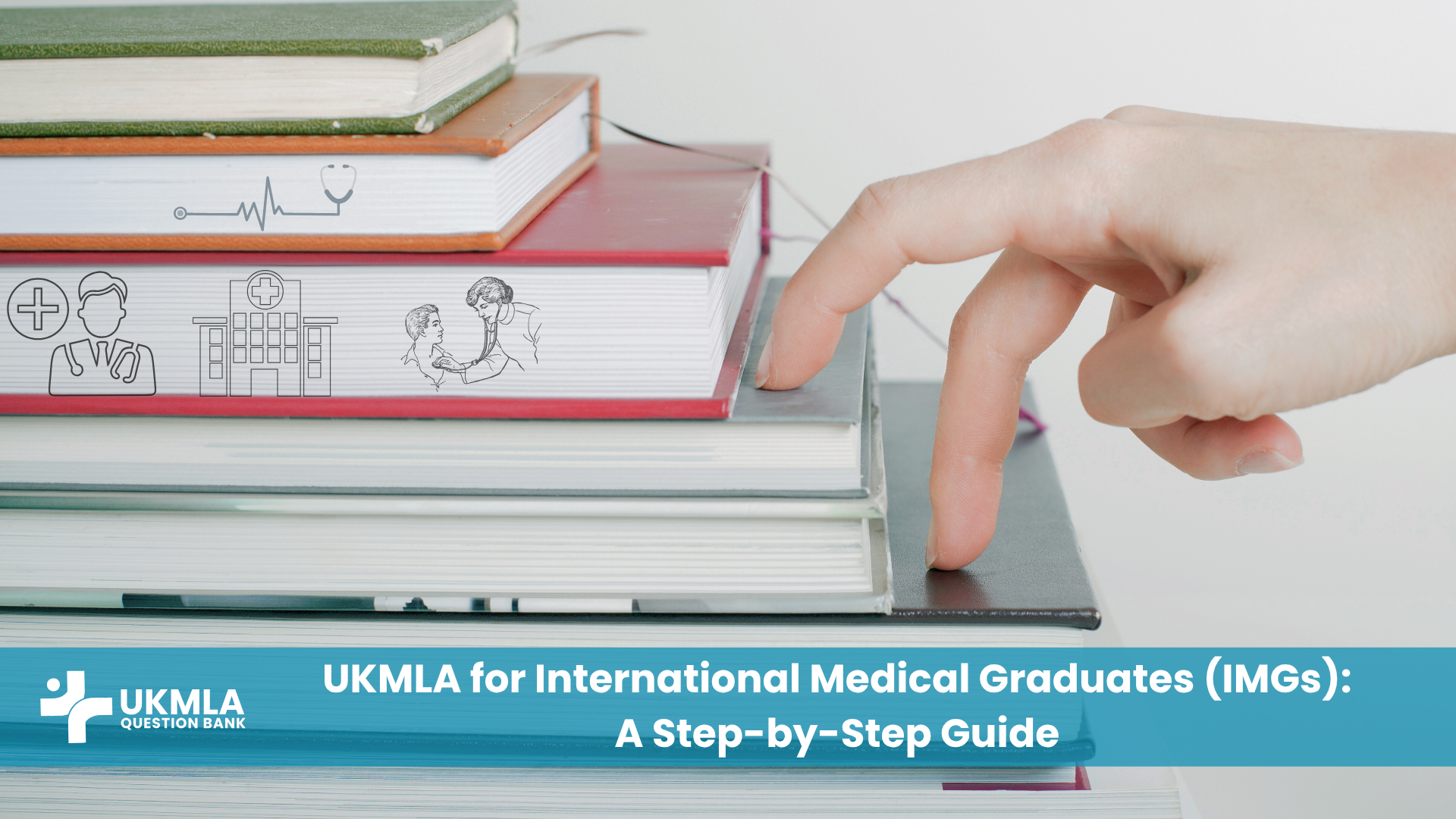The United Kingdom Medical Licensing Assessment (UKMLA) journey culminates in the Clinical and Professional Skills Assessment (CPSA), a practical examination designed to evaluate your readiness for safe and effective medical practice in the UK. Unlike the Applied Knowledge Test (AKT), the UKMLA CPSA shifts the focus from theoretical knowledge to its practical application in simulated clinical environments. Understanding the CPSA format, the nature of its stations, and the specific assessment criteria is paramount for any candidate aiming to succeed in this vital part of the UKMLA.
This comprehensive guide will demystify the UKMLA CPSA. We’ll break down the typical structure of this high-stakes UKMLA clinical skills assessment, explore the types of CPSA stations you’re likely to encounter, and shed light on how your performance will be judged based on the CPSA assessment criteria. Whether you’re a UK medical student or an international medical graduate, knowing what to expect from the UKMLA CPSA will empower you to prepare strategically and approach the exam with greater confidence. Let’s dive into the key elements of the UKMLA CPSA explained in detail.
Key Takeaways
Before we explore the intricacies of the UKMLA CPSA, here’s a snapshot of what you need to know:
Practical Assessment: The UKMLA CPSA is an Objective Structured Clinical Examination (OSCE)-style assessment of your clinical and professional skills.
Focus on Safe Practice: It assesses your ability to apply knowledge, perform procedures, communicate effectively, and manage clinical scenarios safely, all critical for the UKMLA.
Standardized Stations: You will rotate through a series of timed CPSA stations, each presenting a different clinical challenge or professional interaction relevant to the UKMLA clinical skills assessment.
Clear Assessment Criteria: Performance in the UKMLA CPSA is evaluated against predefined CPSA assessment criteria, focusing on specific competencies and domains outlined by the GMC.
Communication is Key: Effective communication with patients (simulated), colleagues, and examiners is a critical component of the CPSA format and its assessment criteria.
Preparation is Multifaceted: Success in the UKMLA CPSA requires not just knowledge, but practiced skills, refined communication techniques, and a professional demeanor.
Understand the Blueprint: Familiarize yourself with the GMC’s UKMLA content map, as it underpins both the AKT and the UKMLA CPSA stations and assessment criteria.
Understanding the UKMLA CPSA: Purpose and Structure
The UKMLA CPSA is a pivotal component of the Medical Licensing Assessment, designed to ensure all doctors practicing in the UK meet a common threshold for safety and competence. It moves beyond what you know (tested in the AKT) to what you can do, a core principle of the UKMLA.
What is the Purpose of the UKMLA Clinical Skills Assessment (CPSA)?
The primary purpose of the UKMLA CPSA is to assess a candidate’s ability to apply their medical knowledge and skills in a practical, patient-centered manner. It aims to determine if you possess the core clinical and professional competencies required to practice safely and effectively as a foundation year doctor in the UK. This means evaluating your history-taking, physical examination skills, communication abilities, procedural competencies, and ethical reasoning in realistic scenarios designed for the UKMLA clinical skills assessment.
The UKMLA CPSA ensures that all newly registered doctors, regardless of where they trained, can demonstrate a consistent standard of care. It’s about protecting patients by verifying that doctors are prepared for the complexities of real-world medical practice, a key goal of the UKMLA.
Overview of the CPSA Format: An OSCE-Style Examination
The CPSA format is typically based on the Objective Structured Clinical Examination (OSCE) model. This involves a circuit of timed CPSA stations, each designed to assess specific skills or competencies related to the UKMLA. Candidates rotate through these stations, performing tasks or interacting with simulated patients (actors trained to portray specific roles) or manikins.
Each CPSA station has clear instructions and a defined timeframe. Examiners, who may be clinicians or trained laypeople, observe and score performance based on a standardized checklist or marking scheme derived from the CPSA assessment criteria. The OSCE style ensures that all candidates are assessed on the same tasks under the same conditions, promoting fairness and objectivity in the UKMLA practical exam. For more general context on the exam, consider reading “Understanding the UKMLA Exam Format“.
How the CPSA Relates to the GMC’s “Readiness for Safe Practice”
A core theme underpinning the entire UKMLA, and particularly the UKMLA CPSA, is “readiness for safe practice.” This means demonstrating that you can:
Gather information effectively.
Perform accurate clinical assessments.
Formulate appropriate management plans.
Communicate clearly and empathetically.
Work effectively within a team.
Recognize limitations and seek help when necessary.
Uphold ethical and professional standards.
The CPSA stations are specifically designed to probe these aspects, ensuring that candidates are not just knowledgeable but can apply that knowledge safely and professionally. The article “A Deep Dive into the ‘Readiness for Safe Practice’ Domain of UKMLA” provides excellent further detail on this crucial domain relevant to all parts of the UKMLA.
Navigating the UKMLA CPSA Stations: What to Expect
The UKMLA CPSA stations are the building blocks of the exam. Each one presents a unique challenge designed to test different facets of your clinical and professional capabilities. While the exact number and nature of CPSA stations can be updated by the GMC, certain types are commonly encountered in this form of UKMLA assessment.
Common Types of CPSA Stations
You can anticipate a variety of station types in the UKMLA clinical skills assessment, including:
History Taking: Eliciting a focused or comprehensive medical history from a simulated patient, a cornerstone of many CPSA stations.
Physical Examination: Performing a relevant physical examination on a simulated patient or manikin (e.g., cardiovascular, respiratory, neurological exam), testing a key aspect of the CPSA format.
Communication Skills Stations: Dealing with challenging communication scenarios, such as breaking bad news, explaining a diagnosis or treatment plan, obtaining informed consent, or counselling a patient. These CPSA stations heavily rely on clear assessment criteria.
Procedural Skills: Demonstrating competency in performing common medical procedures (e.g., venepuncture, cannulation, basic life support) often on manikins, a practical part of the UKMLA CPSA.
Data Interpretation/Clinical Reasoning: Interpreting investigation results (e.g., ECGs, X-rays, blood tests) and formulating a management plan or differential diagnosis.
Patient Education and Advice: Providing clear and understandable information to a simulated patient about their condition or lifestyle modifications.
Ethical Dilemmas: Discussing or managing a scenario involving ethical or professional challenges, often evaluated through specific CPSA assessment criteria.
Highlight: Versatility is key; you must be prepared to switch gears quickly between different types of clinical tasks and communication styles as you move through the UKMLA CPSA stations.
Time Allocation and Structure Within Each CPSA Station
Each CPSA station will have a specific time limit, typically ranging from 5 to 15 minutes. Instructions are usually provided outside the station room, giving you a minute or two to read the scenario and understand your task before entering. Inside the UKMLA CPSA station, you’ll interact with the simulated patient or perform the required task while being observed by one or more examiners.
It’s crucial to manage your time effectively within each CPSA station to ensure you complete all necessary components of the task. Some stations might also include time for the examiner to ask you questions related to your performance or the clinical scenario, impacting the CPSA assessment criteria for that station.
The Role of Simulated Patients and Manikins in the UKMLA CPSA
Simulated patients (SPs) are actors professionally trained to portray patients with specific conditions, histories, and emotional states consistently. They play a vital role in assessing your communication, interpersonal, and clinical examination skills in a realistic manner during the UKMLA CPSA. Treat them as you would real patients, with respect and empathy, as this is part of the CPSA assessment criteria.
Manikins are used for many procedural skills CPSA stations and some physical examination components where it’s not appropriate or feasible to use SPs (e.g., performing invasive procedures, demonstrating CPR). Familiarity with common medical manikins through practice is beneficial for the UKMLA practical exam component of the CPSA.
| ||
|---|---|---|
Station Type Example | Primary Skill(s) Assessed by UKMLA CPSA | Typical Task for a CPSA Station |
History Taking Station | Communication, clinical reasoning, information gathering | Elicit a history for acute abdominal pain from a simulated patient. |
Examination Station | Physical examination technique, professionalism | Perform a focused respiratory examination on a simulated patient. |
Communication Station | Empathy, clarity, ethical awareness | Explain a new diagnosis of Type 2 Diabetes to a simulated patient. |
Understanding the UKMLA CPSA Assessment Criteria
Knowing how you will be assessed in the UKMLA CPSA is just as important as knowing what you will be assessed on. The CPSA assessment criteria are derived from the GMC’s guidelines for good medical practice and the UKMLA content map, forming the basis of evaluation for each CPSA station.
Key Domains of Assessment in the CPSA
Performance in UKMLA CPSA stations is typically evaluated across several key domains. These CPSA assessment criteria often include:
Information Gathering: How effectively you elicit history, perform examinations, and gather relevant data within a CPSA station.
Clinical Problem Solving/Decision Making: Your ability to formulate differential diagnoses, interpret findings, and propose appropriate management plans.
Communication Skills: Clarity of explanations, empathy, active listening, ability to build rapport, and handling of challenging interactions. This encompasses verbal and non-verbal communication.
Applied Clinical Knowledge: Demonstrating understanding of relevant medical conditions, investigations, and treatments in the context of the CPSA station.
Patient Safety: Recognizing and responding to safety-critical issues, ensuring procedures are performed safely, and demonstrating an understanding of risk.
Professionalism & Ethics: Maintaining appropriate professional boundaries, demonstrating respect, and managing ethical dilemmas soundly, all vital for the UKMLA CPSA.
Highlight: The CPSA assessment criteria are designed to provide a holistic view of your competence, looking beyond just technical skill to encompass communication, professionalism, and safety within each UKMLA CPSA station.
The Use of Standardized Marking Schemes and Checklists in CPSA Assessment
To ensure consistency and objectivity in the UKMLA CPSA, examiners use standardized marking schemes or checklists for each CPSA station. These tools outline the specific actions, skills, or pieces of information that are expected for a competent performance according to the CPSA assessment criteria.
Checklists often list essential steps or critical actions for a CPSA station.
Global rating scales might also be used, where examiners provide an overall judgment of performance in specific domains (e.g., communication rated on a scale from unsatisfactory to excellent).
Familiarizing yourself with the types of things likely to be on these checklists (e.g., “Washes hands before procedure,” “Asks about allergies,” “Explains risks and benefits”) can help you focus your practice for the UKMLA clinical skills assessment.
What Constitutes a “Pass” or “Fail” at a CPSA Station and Overall?
Passing the UKMLA CPSA typically involves meeting a predetermined overall standard across all CPSA stations. This might involve passing a minimum number of stations and achieving a satisfactory aggregate score. Some CPSA stations may have “critical errors” or “red flags” – actions that, if performed (or omitted), could lead to automatic failure of that station due to significant patient safety concerns, as defined by the CPSA assessment criteria.
The exact standard-setting methodology for the UKMLA CPSA is determined by the GMC. It’s important to aim for a competent and safe performance in every station, rather than just focusing on passing a certain number. > “The CPSA is not just about demonstrating isolated skills; it’s about showing you can integrate them to provide safe, patient-centered care consistently across all UKMLA CPSA stations.” – (Attributed to a hypothetical GMC Examiner).
Preparing Effectively for the UKMLA CPSA
Success in the UKMLA CPSA hinges on targeted and consistent preparation that goes beyond theoretical knowledge. It requires honing your practical skills and communication techniques for each type of CPSA station and understanding the CPSA assessment criteria.
The Importance of Clinical Experience and Reflective Practice for the CPSA
Your everyday clinical encounters are invaluable preparation for the CPSA stations. Actively engage with patients, practice your examination and procedural skills under supervision, and pay close attention to how senior colleagues communicate and manage clinical situations. Reflect on your experiences: What went well? What could you improve? How does this relate to the competencies assessed in the UKMLA clinical skills assessment and its specific CPSA assessment criteria? This reflective practice helps bridge the gap between real-world medicine and the structured environment of the OSCE, vital for the UKMLA CPSA.
Practicing with Peers and Simulated Scenarios for CPSA Stations
Practice is crucial for the UKMLA CPSA. Organize study groups with peers to run mock OSCE circuits. Take turns being the candidate, the simulated patient, and the examiner (using mock checklists based on potential CPSA assessment criteria). This helps you:
Refine your approach to different CPSA station types.
Improve your timing for each UKMLA CPSA station.
Get constructive feedback on your communication and examination techniques.
Become comfortable with the OSCE CPSA format.
The more you practice in simulated scenarios, the more natural and confident you will feel during the actual UKMLA CPSA.
Utilizing UKMLA Resources and Attending Preparatory Courses for the CPSA
While hands-on practice is paramount for the UKMLA CPSA, specific resources can be beneficial:
OSCE Books and Online Materials: Many resources provide example CPSA stations, checklists, and advice on OSCE technique.
Preparatory Courses: Some organizations offer CPSA/OSCE preparation courses that provide structured practice and feedback from experienced tutors. These can be particularly helpful for understanding the nuances of the CPSA assessment criteria and the CPSA format.
Remember to also review practical aspects like those covered in articles such as “UKMLA Exam Day Checklist: What to Bring and What to Expect” as part of your overall readiness for the UKMLA clinical skills assessment.
Preparation Strategy | Key Focus for UKMLA CPSA | Benefit for CPSA Stations and Assessment Criteria |
Clinical Rotations | Real-patient interaction, observation of seniors | Develops foundational skills, contextual understanding for various CPSA stations. |
Peer Practice (Mock OSCEs) | Simulating CPSA stations, timing, communication | Builds confidence, refines technique for the UKMLA CPSA, identifies weak areas based on CPSA assessment criteria. |
OSCE Resources/Courses | Understanding CPSA format & assessment criteria | Provides structured learning, expert feedback, targeted skill development for the UKMLA CPSA. |
Frequently Asked Questions (FAQ) on UKMLA CPSA Questions Answered.
The total duration can vary but typically involves a circuit of 10-20 CPSA stations, with the entire UKMLA clinical skills assessment lasting several hours, including breaks and administrative time. Check official GMC guidance for the most current details on the CPSA format.
Generally, direct feedback is not provided by the examiner immediately after a CPSA station in a high-stakes OSCE like the UKMLA CPSA. Your overall results will be communicated to you after the entire examination process is complete.
Everyone makes minor mistakes. Examiners are trained to look at your overall performance within a CPSA station based on the CPSA assessment criteria. A single small error is unlikely to cause you to fail a station unless it’s a critical safety issue. Focus on recovering and performing competently overall in the UKMLA CPSA.
Communication is assessed throughout various CPSA stations, not just dedicated communication ones. This includes clarity, empathy, active listening, use of non-verbal cues, ability to explain complex information, and handling patient concerns, all mapped to specific CPSA assessment criteria for the UKMLA clinical skills assessment.
Some OSCEs may include rest stations, but this depends on the specific CPSA format being implemented by the UKMLA. Even if not a formal “rest” station, the time between CPSA stations can be used to clear your head and refocus.
The UKMLA CPSA assesses the application of clinical knowledge expected of a doctor ready for UK foundation training. While the knowledge base is similar to the AKT, the CPSA focuses on how you use that knowledge in practical, clinical scenarios within its stations, rather than just recalling it. The assessment criteria reflect this applied focus.
You should dress professionally for the UKMLA CPSA, as you would for clinical duties in a UK hospital (e.g., smart attire, adhering to any “bare below the elbows” policies if applicable for clinical contact). This contributes to the professional impression you make, which is part of the broader assessment criteria.
Generally, personal notes and unauthorized equipment are not permitted into UKMLA CPSA stations. Any necessary equipment for a station (e.g., stethoscope, pen torch) will usually be provided or you’ll be told what to bring. Always check official candidate instructions for the UKMLA clinical skills assessment.
Simulated patients in the UKMLA CPSA are trained to be consistent, but their roles may involve portraying strong emotions or challenging behaviors. Your ability to respond professionally, empathetically, and effectively is part of the CPSA assessment criteria for that station.
Thorough preparation and practice for the CPSA stations and understanding the CPSA format are the best antidotes to anxiety. On the day, use relaxation techniques (e.g., deep breathing), focus on one UKMLA CPSA station at a time, and remind yourself of your training and capabilities. Trust your preparation for the UKMLA practical exam.
Conclusion: Demonstrating Your Clinical Competence in the UKMLA CPSA
The UKMLA CPSA is your opportunity to demonstrate that you possess the essential clinical and professional skills required for safe and effective medical practice in the United Kingdom. By understanding the CPSA format, familiarizing yourself with the types of CPSA stations you’ll encounter, and internalizing the CPSA assessment criteria, you can approach this crucial UKMLA clinical skills assessment with a clear strategy and well-deserved confidence.
Success in the UKMLA CPSA is achieved through dedicated practice, reflective learning from your clinical experiences, and a commitment to honing your communication and professional skills relevant to each CPSA station. Remember that each station is a chance to showcase your abilities according to the established CPSA assessment criteria. Stay calm, be systematic, and focus on patient-centered care. Your journey through the UKMLA CPSA is a significant step towards your future as a practicing doctor in the UK. Thorough preparation will be key to navigating the CPSA format and meeting the assessment criteria for all stations.



